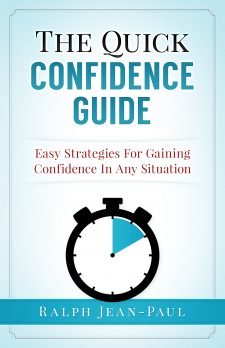There are many different ways to persuade people to your way of thinking. Politicians, writers, and advertising companies use multiple techniques to get the masses to buy into their message. But persuasion techniques are important for everyone to learn.
We are constantly trying to persuade others in one direction or another. Whether it is trying to convince your friends to eat at one restaurant instead of another, or getting your boss to give you a raise, being able to persuade other people is important.
Ancient Greek philosophers such as Plato and Aristotle understood the power of persuasion. They used persuasion (rhetoric) to win support from the people. In his writings, Aristotle outlined three elements of persuasion; logic, emotion and character.
A lot has changed since the fifth century B.C. and many new persuasion techniques have been developed. But do they really work? I set up a challenge to test 5 common persuasion techniques to see if they really work.
Persuasion vs. Manipulation
There is a difference between persuasion and manipulation. Being persuasive is having social influence to move others to your way of thinking. Manipulation is usually always unethical and does not pay off in the long run. While doing my research for some of the best persuasion techniques, I found that many of them were borderline manipulation tactics.
Manipulation uses other people’s emotions against them. It involves making people do something that they obviously don’t want to do. If you’ve been manipulated, you understand that feeling. Giving misinformation, reducing others to ‘things’ instead of people, and attempting to control are all characteristics of manipulation. Here are some other common manipulation tactics to watch out for,
-Minimizing others
-Using Guilt
-False perception (Sheep in Wolves Clothing)
-Lying
-Intimidation
-Playing the victim
-Seduction
Persuasion should show mutual benefit for both parties. The other side should still feel as though they have the right to choose. Persuasion is swaying others to adopt a mindset or action that they are considering. Here are just a few effective techniques for written or verbal persuasion,
Verbal Techniques
-Using Analogies
-Emotional Appeal
-Being honest (don’t get caught in a lie)
-Intellectual Appeal
-Logical Appeal
Written Techniques
-Rhetorical Question
-Repetition
-Authority
-Comparisons
-Storytelling
There are many more persuasion techniques and tactics out there. I decided to attempt a few of the more common techniques to see if they would be effective in everyday situations.
The Persuasion Techniques Experiment
Test 1-Get better service at a restaurant
Strategy #1: Reciprocal Persuasion (The Golden Rule)
A person is more likely to treat you better if they like you. Most people are reciprocal in the way they are treated. If you’ve ever worked as a server or in retail, you understand the expectation that customers have about getting quick, error free, service with a smile. While this is good for business, it is easy for the servers and associates to feel like robots instead of people.
I have felt this way in past jobs. To test the first strategy, I decided to treat the server, exactly the way I would like to be treated if I were a server. In other words, more like a human being instead of a robot.
Challenge: Better Service
A friend and I went to a Chinese Bistro. I was wary about going to this particular restaurant because the last time I was there the waiter took a very long time to bring the check after we had finished eating. That was not the first time that we had to wait for our check. On a previous visit, a waitress took about 15 minutes to bring our check after we asked for it. I thought this visit would be a great time to practice the reciprocal technique to get better service.
During the meal, I thought of ways to make the server’s job as easy as possible. We had our orders ready and that avoided him having to come back and forth. When we were done with the appetizer plates, I neatly stacked them and placed all of the silverware and napkins on top. I did the same thing with the main course plates.
After our meal, my friend went to use the restroom. The waiter came by and asked if we were ready for the checks. Instead of just replying ‘yes’, I struck up a conversation with him. By the time my friend returned from the restroom, the waiter had already told me about his childhood growing up in Indiana, the band he currently plays in, and all of the drama between his past girlfriend and current girlfriend.
Result:Quick response and made a new friend
When I finally asked him to bring the check, it took less than five minutes for him to return. He not only seemed eager to come back to the table and wrap-up the conversation, he told us his working schedule and would try to get us a good table if we came back when he was working.
Test 2- Get People to Participate or Volunteer
Strategies: #2 Incentive and #3 Social Proof
The Incentive strategy is a strategy of reminding the other party of the incentives of participating. Whether it is for a fundraiser or party, stating the incentive is a good way to sway everyone to participate.
The use of the social proof technique was an accident. Social proof is the phenomenon that happens when a person looks at the actions of others around them to determine their own actions. The idea is to promote participation by displaying how many other people are also participating. You’ve probably heard advertisers plant phrases like “largest selling” and “15,000 people have switched to” in commercials to entice buyers to participate.
Challenge: Get Participation
I was in charge of getting volunteers to participate in a department event at work. The purpose of the event was to raise morale by getting the associates together to enjoy each other’s company. At our last staff meeting, I made sure to mention the event and posted a sign-up sheet. With 3 days until the event, I still had about 12 open spots.
I realized that I had to become proactive and use some persuasion techniques to fill the rest of the spots. I took the list of names and went around my department with the goal of filling all of the empty spots. Instead of going up to each individual and asking for participation, I would approach people in rooms or small groups. I did this in order to not put pressure on those people who had no interest in participating.
When I mentioned the event to everyone in their groups, I reminded everyone of the purpose of the event. We were going to have a variety of delicious food so I decided to emphasis the different dishes that were going to be served.
“We’ve got rotisserie chicken, mashed potato, pasta, and for dessert, cake, flan and banana pudding.”
Before I could go down the entire list of food, I would be interrupted by people voicing their commitment and adding their name to list.
The social proof technique worked with almost no effort on my part. I decided to stop approaching people and post the sign-up sheet back on the wall. The next day I found that more people signed up and filled the list. There were so many names that people were writing their names vertically on side of the sheet.
Results: Exceeded Participation Quota
The strategy worked very well. This event went much better than in previous years. This was due to the overwhelming number of participants. Everybody had a marvelous time and the flan was great!
Test 3-Making the sale
Strategies: #4 The Puppy Dog Close and #5 Framing
While I was in the mall trying to think of a way to test the last techniques, I came across someone who used them on me. There were two different techniques used in this particular scenario, the Puppy Dog Close and Framing.
The Puppy Dog Close got its name from the pet store industry. The sales people would let potential customers take a puppy home, and if they were unhappy with the dog, they could return it. After a few days of having a cute, loving, playful puppy running around, most people couldn’t imagine returning it to the pet store. The idea is to let the customer try the product before they buy.
The next technique that was used was the framing technique. Framing is way conjure images in the minds of other people. Have you ever been out somewhere and someone says “look over there”? Most likely, you will look to see what the person is talking about.
But what if that person said “don’t look over there”? Chances are you would still want to look. By using the word ‘look’, they are invoking you to look no matter the context.
Challenge: Sell
It was a Thursday afternoon and I was walking toward the exit of my local mall when I passed a kiosk. I’m sure that you’ve passed by the many kiosks in your local mall on the way to your favorite store. They sometimes sell cell phone accessories, jewelry, and t-shirts. This particular kiosk sold Mediterranean beauty products.
I had no need for Mediterranean beauty products, or so I thought. The sales woman tried to get my attention by asking for a moment of my time. I declined but she persisted and promised that it would only take a few minutes. I finally agreed and she began massaging the scrub into my hand as she told me about the product and its uniqueness. After she finished her demonstration, she proceeded with her pitch.
She told me to compare the hand that she applied the scrub to with my other hand. She asked if I noticed how much softer and smoother the treated hand was. I had to admit, my hand was smoother.
Shaving is one of my least favorite things to do. I am always interested in anything that can make that process more comfortable. She described how much the scrub would help me before shaving. In her description, she used words like ‘rough’, ‘dry’ and ‘itchy’. I felt the urge to scratch my face.
Results: Purchased
By testing the scrub on my hand, she used the Puppy Dog Close to convince me that the product worked. She told me if I didn’t like the scrub, I could return it. Then, by using words like soft and smooth, she conjured positive images about the results of the scrub. She contrasted that by using negative framing words like rough, dry, and itchy to show the negative effects of shaving without the scrub.
Conclusion
In every challenge, both parties benefited. At the restaurant, I told the manager of the great job that our server did. At work, the event that I organized went very well. We all enjoyed each other’s company and many wished that we could hold similar events more often. And with the scrub, I was very satisfied and have since returned to buy a few more tubes.
Being able to persuade your readers, audience, customers or coworkers is a valuable skill to have. It may very well be one of the most useful communication skills a person can possess. Have you ever used any of these techniques? How do you persuade others to your way of thinking?


 Subscribe for free today and get a FREE copy of my ebook The Path 2 Success. Begin your path today!
Subscribe for free today and get a FREE copy of my ebook The Path 2 Success. Begin your path today!










